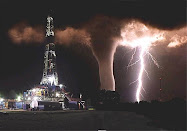
Wandering through the twisty corridors of monetary policy is a head trip through an alien mind. How often do I ask, “Why in hell did they do that?” The Fed committee minutes, highly excerpted, no doubt, read like oracular pronouncements from Dephi, even without Mr. Greenspan’s gift for ambiguity. One cannot look back in the history of the 2008 crash and see a clear sense of direction and consequence. Bernanke’s recent Congressional testimony admits to “mistakes”, generically, but not the obvious mistakes and his reasoning does not make real sense to this writer. Throughout this article, bear in mind that the Fed is the monetary agent of a cabal of financial institutions whose fortunes are entwined with it and whose key personnel are interchanged,
From the top:
Why is the Fed holding the rediscount rate close to zero, and what is it supposed to do?
The immediate effect is that “financial institutions” which used to be just banks but now includes such unclassifiable behemoths as Goldman Sachs, can borrow many billions almost free and invest at a huge profit. What did they invest in? Mostly foreign infrastructure and domestic financial institutions. What are the consequence? Instead of money flowing into the US credit system, it served to make those institutions bigger. US small and medium business still can’t get a decent loan, or any kind of loan at all. At the same time there are real estate bubbles in Dubai and Shanghai and Hong Kong. The oil market is one enormous bubble. The idea that TARP money was supposed to flow into the credit system has quietly died. It went into making the “too big too fail” guys even bigger, at the cost of the US deficit. This acquisition spree was abetted by the FDIC, who turned banks over to TARP-funded buyers in wholesale lots at fire sale prices. The FDIC is now out of bailout money. This is just unbelievable.
I remember being told that the housing price collapse caused by bad mortgages was the immediate cause of the banking illiquidity, and that solving the housing situation was key to a recovery. So why is it that only 15% of mortgage modifications have been processed? Have you seen the onerous paperwork that needs to be filed to get such a loan? Do you know about the new total recourse loans that will put you on the street permanently if you can’t pay up? This is not the work of a government that really wants to solve the mortgage crisis. It will go on for many years. Practically none of the TARP money has flowed back to loan mods and it looks like it never will.
What is the Fed’s purpose in life?
As the largest creditor in the history of the world, the Fed needs to make sure that inflation does not erode the real value of its trillions of dollars . That means that the rate of inflation should be less than the effective Fed loan rate. With the main loan rate close to zero, that is a tough call. However, the real Fed is composed of independent regional banks that process all the new transactions for a series of fees, it buys and resells properties, as well as holding properties that it takes as collateral. While it holds these assets ($2.2 trillion as of 12/31/08, probably over $5 trillion now) it can issue Fed notes against this collateral, so it takes in interest on the original secured loan and loans it out several times again, up to ten times the value of the collateral held. This is immensely profitable, and also garners a lot of power for the Fed people to make and break huge deals. To give you an idea of the size and influence of the Fed holdings, the total Fed and Treasury money supply is $11.8 trillion. The Fed holds an estimated 42%. This is enough to buy England or France outright. The Fed holds 5000 metric tons of gold bullion, most of it in trust for other countries. In comparison the US Treasury holds 4,603 tons of gold bullion. No other country holds nearly that much gold.
$1 trillion in $100 dollar bills, double stacked pallets. Note figure of man in lower left.
If the interest rate was higher, the deal play would be less. It’s a business calculation as to how to set the most profitable rate. If inflation is a little high the Fed makes money on the interest rate. If the inflation is a little low, it makes money on the deal flow. Keeping the interest rates between the lines, the Fed cartel cannot lose. The rediscount rate just has be a bit higher than the inflation rate.
Only in a rare deflationary event, such as the current cycle, can the Fed make and keep a zero rate. Therefore the Fed and its dependents are making deals as fast as they can while the economy shrinks. I believe that is the real reason Bernanke says he will keep rates at the bottom for a while.
Does the Fed care about a strong US economy?
The US economy, according to the WSJ, shrunk from 34% of the world GDP to only 23% since 2001. Could the Fed have exerted some control over this? Yes. Did they do what they could to prevent it? The evidence says no. The Euro is over $1.50 and gold is over $1200 a Troy ounce. These are good measures of the market value of a dollar bill at the end of 2009. In 2001 those numbers were $0.93 and $325, respectively.
Why doesn’t this matter to the Fed?
Part of the answer is that the dollar still remains the favored world reserve currency, although that position is threatened. I suspect the Fed walks a fine line here. It cannot be easy to diversify Fed dollar holdings into other currencies. On the other hand, a cheap dollar makes US exports grow and keeps the relative cost of US labor somewhat cheaper on the world market. Since labor productivity is measured in dollars per worker, that number goes up as the value of the dollar goes down. That makes business in the US look more productive, and makes those productive US businesses cheaper on the world market. Those are the same otherwise viable businesses that are failing because they can’t get a bank loan. A lot of them are up for sale, or partial sale through stock issues, and they are seeking out foreign investors. Those investors are floating on the cheap dollar. The TARP monies flow overseas and the overseas institutions wind up buying US businesses at deflated prices. This increases the deal flow to the Fed’s buddies.
If the dollar gets too weak and other currencies become the favored reserve currencies, the Fed loses this advantage. Only if the Fed cronies can gain control of global banking institutions can the Fed get on top of this problem. Until then, the dollar cannot be allowed to get too weak.
Does the Fed have any real stake in US prosperity?
It isn’t at all a clear picture. A stable US economy that grows at rate higher than the population increase is what we want as citizens. It means that our children can expect a higher standard of living than we have now. Onward and upward! Except it hasn’t happened in two generations now. Our kids will not have the discretionary income we enjoyed. We are not doing as well as our parents. Does the Fed have any control over that and do they care?
The per capita performance of the economy is so complex. Monetary policy, the domain of the Fed, is one factor. Fiscal policy, the domain of Congress, is another. World trading and commodity interactions, technology, innovation and the size and capability of the working echelon are all important. It’s a system of non-linear feedbacks, positive and negative, that a mathematician recognizes as a quasi-chaotic model. In this situation, economic conditions are very much like the weather. Only global conspirators and climategate deniers have the hubris to think we humans are in control.
One thing is clear, though. Turbulence in the economy is most useful to those who can most take advantage of it. The Fed and its dependents meet that definition.
The Fed ought to raise the rediscount rate by 25 basis points in their December meeting and announce that they will have another quarter percent raise every month for several months. A two or three percent rate by next June will send the message that the dollar is not being neglected and that the time to shear the sheep has passed.
Thanks for reading and thanks for your comments.


No comments:
Post a Comment